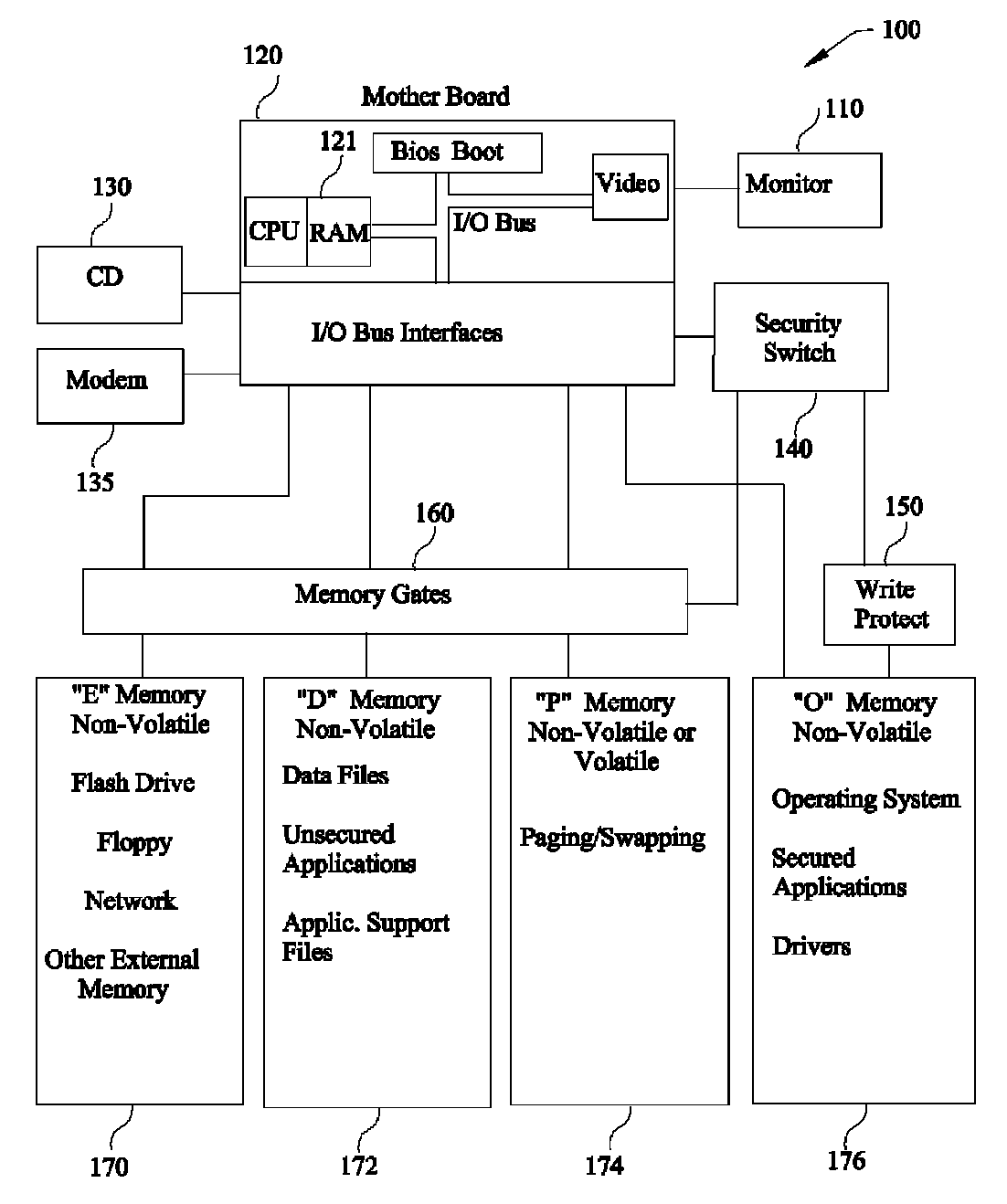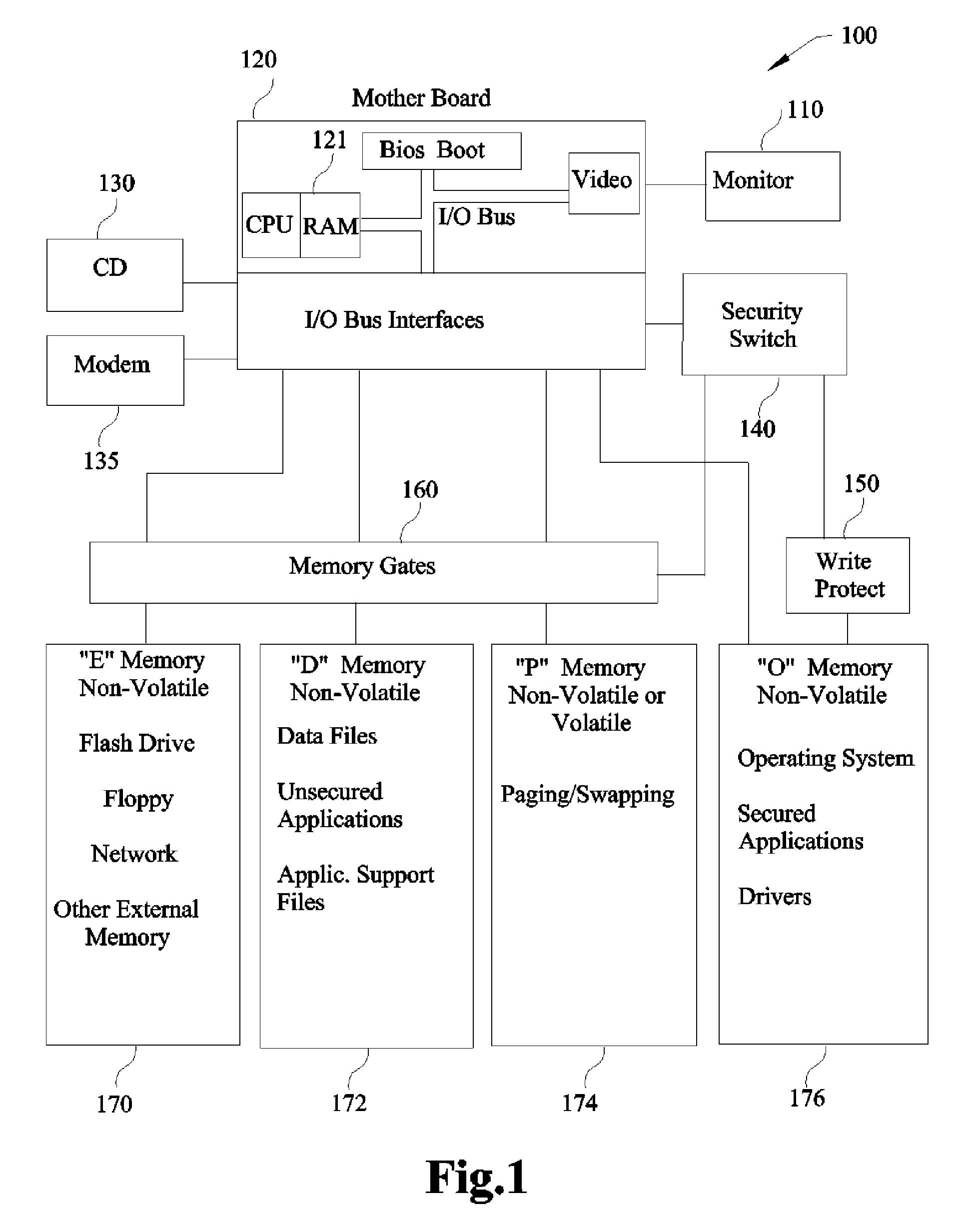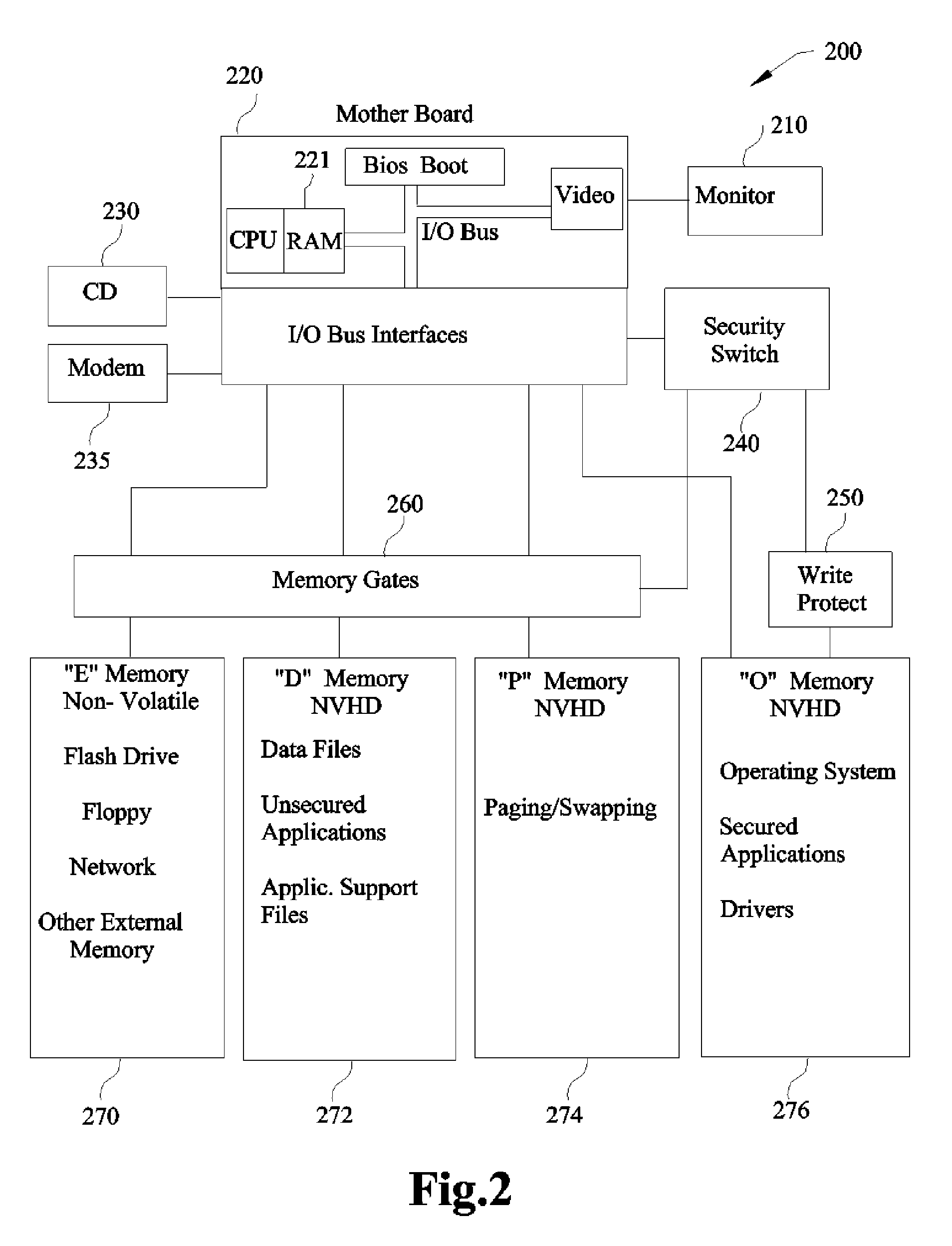Protecting computers from malware using a hardware solution that is not alterable by any software
a hardware solution and malware technology, applied in the computer field, can solve the problems of not being able to write protected during normal operation, malware software cannot alter the write protection mode or infiltrate the hardware protected critical software nv memory, and cannot protect critical software elements during normal operation
- Summary
- Abstract
- Description
- Claims
- Application Information
AI Technical Summary
Benefits of technology
Problems solved by technology
Method used
Image
Examples
first embodiment
[0039]The first embodiment block diagram is FIG. 2 which is a refinement of FIG. 1 (generic block diagram); the “O” Memory 276 is a Non-Volatile Hard Drive (NVHD), the “P” Memory 274 is a Non-Volatile Hard Drive (NVHD) and the “D” Memory 272 is a Non-Volatile Hard Drive (NVHD). Each of these Hard Drives is independent of each other in all aspects of their functionality to assure the necessary isolation for writing, reading, erasing and write-protecting. In particular, the “O” Memory 276 is isolated to be write-protected as an independent entity as opposed to partition software protection that is vulnerable to malware. Also, the “P” Memory 274 is isolated to permit erasing or cleansing of possible malware.
[0040]The following will reference FIG. 9 (Operational Flow Diagram) and FIG. 2. Normal operation can start with operation 905 indicating Power is OFF forcing all volatile memory to clear including RAM 221 memory. Cleansing RAM 221 memory of possible malware eliminates contamination...
second embodiment
[0047]The second embodiment block diagram is FIG. 3 is a refinement of FIG. 1 (generic block diagram); the “O” Memory 376 is a Non-Volatile Hard Drive (NVHD), the “P” Memory 374 is a Non-Volatile Solid State Drive (NVSSD) and the “D” Memory 372 is a Non-Volatile Hard Drive (NVHD). Each of these memories is independent of each other in all aspects of their functionality to assure the necessary isolation for writing, reading, erasing and write-protecting. In particular, the “O” Memory 376 is isolated to be write-protected as an independent entity as opposed to partition software protection that is vulnerable to malware. Also, the “P” Memory 374 is isolated to permit erasing or cleansing of possible malware. There are a number of emerging NVSSD technologies that can be applied to the “P” Memory 374 such as EEPROM, Flash Drive, MRAM, FRAM and OUM. Most promising are MRAM and Flash Drive.
[0048]The following will reference FIG. 9 (Operational Flow Diagram) and FIG. 3. Normal operation can...
third embodiment
[0055]The third embodiment block diagram is FIG. 4 is a refinement of FIG. 1 (generic block diagram); the “O” Memory 476 is a Non-Volatile Hard Drive (NVHD), the “P” Memory 474 is a Non-Volatile Solid State Drive (NVSSD) and the “D” Memory 472 is a Non-Volatile Solid State Drive (NVSSD). Each of these memories is independent of each other in all aspects of their functionality to assure the necessary isolation for writing, reading, erasing and write-protecting. In particular, the “O” Memory 476 is isolated to be write-protected as an independent entity as opposed to partition software protection that is vulnerable to malware. Also, the “P” Memory 474 is isolated to permit erasing or cleansing of possible malware. There are a number of emerging NVSSD technologies that can be applied to the “P” Memory 474 and “D” memory 472 such as EEPROM, Flash Drive, MRAM, FRAM and OUM. Most promising are MRAM and Flash Drive.
[0056]The following will reference FIG. 9 (Operational Flow Diagram) and FI...
PUM
 Login to View More
Login to View More Abstract
Description
Claims
Application Information
 Login to View More
Login to View More - R&D
- Intellectual Property
- Life Sciences
- Materials
- Tech Scout
- Unparalleled Data Quality
- Higher Quality Content
- 60% Fewer Hallucinations
Browse by: Latest US Patents, China's latest patents, Technical Efficacy Thesaurus, Application Domain, Technology Topic, Popular Technical Reports.
© 2025 PatSnap. All rights reserved.Legal|Privacy policy|Modern Slavery Act Transparency Statement|Sitemap|About US| Contact US: help@patsnap.com



